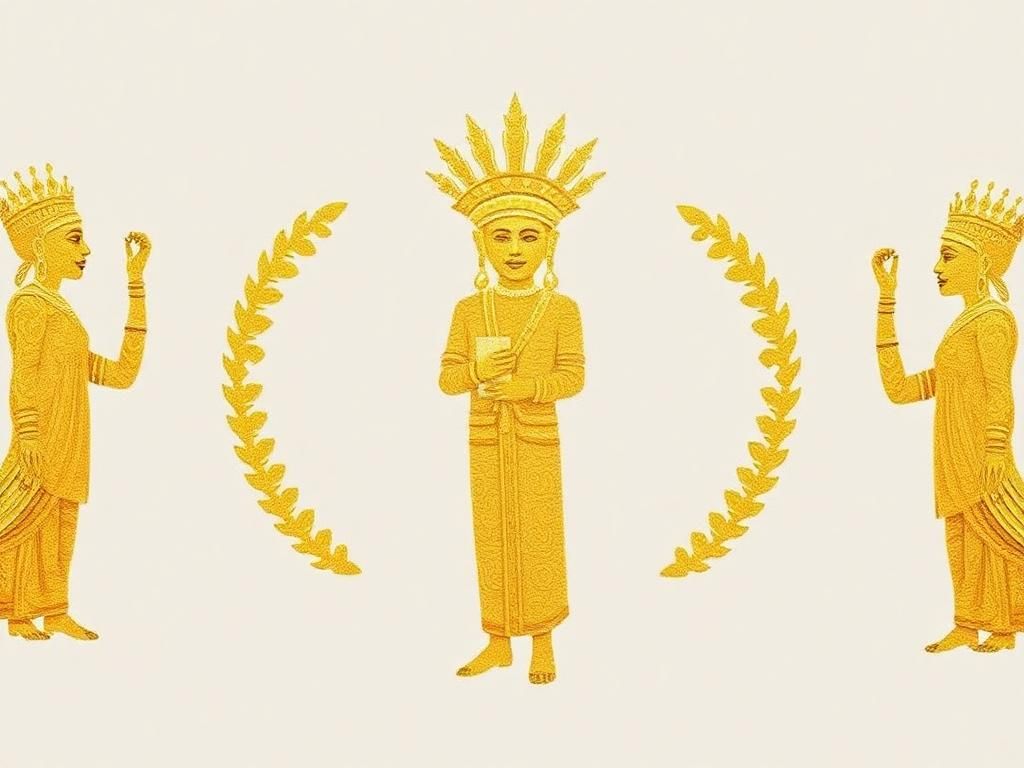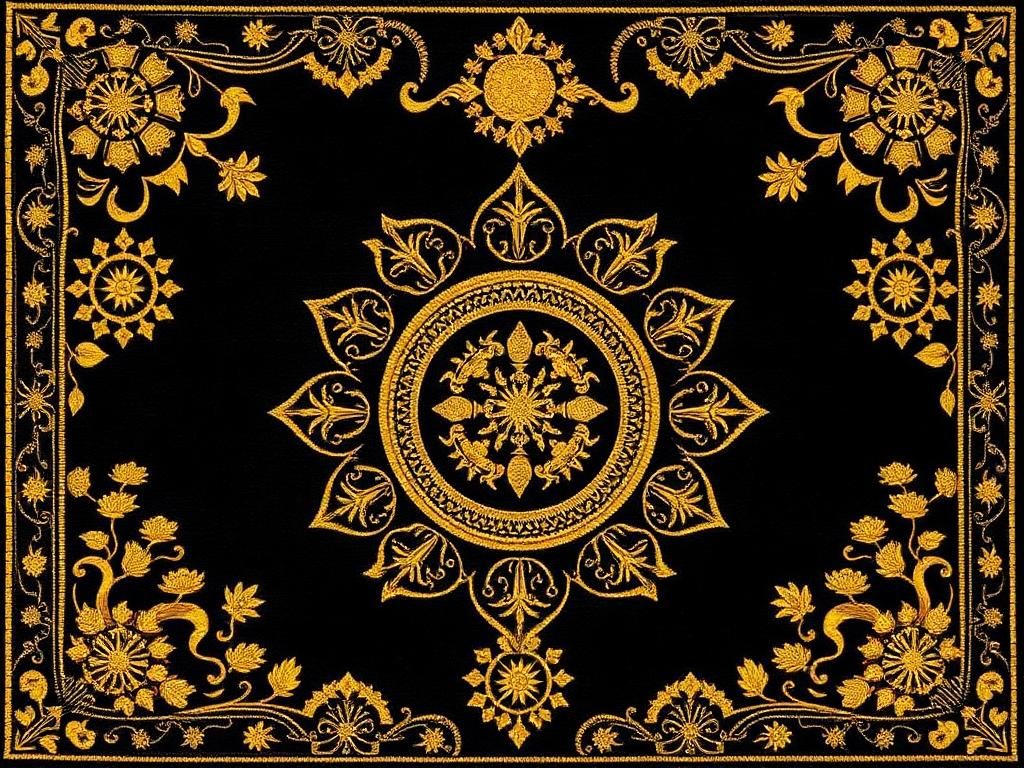Gold has been a symbol of wealth, power, and divine favor throughout history, transcending cultural boundaries and evolving meanings. As a precious metal, its allure and unique characteristics have inspired countless interpretations and resonated deeply with various civilizations. This article delves into the multifaceted nature of gold symbolism, examining its historical context, cultural significance, psychological implications, and its standing in modern society.
Understanding Symbolism
Definition of Symbolism
Symbolism refers to the use of symbols to convey deeper meanings or concepts in cultural and artistic contexts. In essence, symbols act as bridges between the tangible and the intangible, allowing us to express complex ideas, emotions, and beliefs succinctly. By utilizing symbols, artists, writers, and even everyday people can communicate beyond literal interpretations, embedding cultural narratives within layered meanings that resonate through time.
Importance of Symbols in Human Expression
The importance of symbols in human expression cannot be overstated. They inform our values, shape our identities, and facilitate understanding among diverse communities. Through symbols, we convey what is significant to us—be it love, faith, power, or wisdom. Among these, few symbols have captivated human imagination quite like gold.
Overview of Gold as a Symbol
Historical Significance of Gold Across Civilizations
Throughout history, gold has demonstrated a consistent significance across various civilizations. Emblematic of wealth, prosperity, and status, it has been utilized in a myriad of ways—ranging from currency and jewelry to decorative arts and religious artifacts. Gold has even been viewed as a mediator between the material and spiritual worlds, enriching its symbolic value.
Common Themes Associated with Gold Symbolism
There are several recurring themes associated with gold symbolism: transcendence, purity, immortality, and divine authority. Each culture interprets these themes uniquely, adding complexity and richness to the understanding of gold as a powerful symbol.
Historical Context of Gold Symbolism
Ancient Civilizations
Egyptian Culture
In ancient Egyptian culture, gold was primarily linked with the divine and the afterlife. The magnificence of gold in burial practices, especially within pharaohs’ tombs, highlighted its role as a currency for the afterlife. Beyond material wealth, gold signified a connection to the gods, particularly Ra, the sun god, who represented life, warmth, and regeneration.
Mesopotamia
In Mesopotamian civilization, gold was frequently utilized in royal ornaments and as temple decorations, indicating wealth and political power. The craftsmanship involved in creating gold artifacts represented not just prosperity but also the collective skill of the artisans who played a vital role in sustaining the culture.
Classical Antiquity
Greek and Roman Symbols
In classical antiquity, gold held divine significance—often seen in the golden crowns awarded to gods and heroes. The Greeks and Romans depicted gold in their grand art and architecture, embellishing temples and monuments, symbolizing both wealth and divine favor through intricate designs.
The Myth of King Midas
The myth of King Midas illustrates the dual nature of wealth encapsulated by gold. While Midas’s ability to turn everything he touched into gold represented material success, it ultimately revealed the perils of greed. This narrative serves as an allegory for the moral dilemmas associated with the pursuit of wealth.
Cultural Significance of Gold
Religious Symbolism

Buddhism
In Buddhism, gold features prominently in religious artwork and statues, most notably as gold leaf on Buddha images. It symbolizes purity, enlightenment, and spiritual transcendence, grounding the beliefs of millions in its sacred beauty.
Christianity
In Christianity, gold is often employed to symbolize divine glory and the splendor of heaven. Sacred artifacts like chalices and altar pieces adorned with gold underscore its significance in representing spiritual wealth as opposed to earthly riches.
Folk Traditions and Mythology
Gold in Folklore
Gold appears abundantly in folklore, often associated with prosperity and luck. Classic fairy tales, like “The Golden Goose,” illustrate how gold typically signifies fortunes and rewards for those who conquer adversity.
Modern Myths
In contemporary storytelling, gold continues to hold symbolic weight. Movies and books often reflect themes of greed, wealth, and aspiration, highlighting society’s ongoing fascination with gold as a representation of success and opulence.
Psychological and Emotional Aspects of Gold
The Color Psychology of Gold
Warmth and Prosperity
Gold is a color that evokes warmth, comfort, and joy. This association not only makes gold a desirable metal but also enhances its symbolic capacity, as warmth is often linked to feelings of happiness and abundance.
Confidence and Empowerment
The presence of gold can significantly influence self-esteem and perceived social status. Wearing gold jewelry, for instance, might empower individuals, allowing them to project confidence and authority, highlighting gold’s role as a status symbol.
The Dual Nature of Gold
Greed vs. Generosity
Gold embodies a conflict between greed and generosity. While it can symbolize wealth and success, literature often portrays characters experiencing moral dilemmas that stem from their obsession with wealth, encouraging readers to reflect on the values they hold.
Symbol of Burden
Wealth conveyed through gold can also represent pressure and responsibility. The concept suggests that with great wealth comes even greater expectations, a theme explored in various cultural narratives.
Gold in Modern Culture
Art and Design
Contemporary Art

In modern visual arts, artists continue to use gold to convey messages about status, luxury, and decay. From ornate installations to minimalist designs, the application of gold remains a prevalent technique to evoke emotion and provoke thought.
Fashion and Jewelry
The fashion industry embraces gold extensively, often using it as a hallmark of elegance and luxury. As a status symbol, gold jewelry can communicate wealth and social standing while also reflecting personal identity and style.
Gold in Popular Media
Film and Literature
Cinematic portrayals and literature frequently utilize gold symbolism to portray themes of aspiration, avarice, and transformation. Iconic phrases like “all that glitters is not gold” remind audiences of the complex relationship society maintains with wealth.
Digital Age
In the digital era, gold’s symbolism has further evolved with the advent of cryptocurrencies. The term “digital gold” references Bitcoin and other cryptocurrencies, illustrating a modern take on wealth and investment that continues to captivate popular interest.
Table: Key Symbolic Themes of Gold Across Cultures
| Cultural Aspect | Symbolic Themes | Significance |
|---|---|---|
| Egyptian Culture | Divine connection, afterlife | Wealth and spiritual rebirth |
| Mesopotamian Civilization | Wealth, power | Political significance and social hierarchy |
| Greek & Roman Antiquity | Divinity, success | Artistic expression of power |
| Buddhism | Purity, enlightenment | Spiritual aspirational values |
| Christianity | Divine glory, heaven | Beyond material wealth |
| Folk Traditions | Prosperity, luck | Moral narratives and values |
| Modern Symbolism | Greed, aspiration | Reflection of societal values |
Conclusion: The Enduring Legacy of Gold Symbolism
Gold’s symbolism remains rich and multifaceted, continuing to resonate across cultures and through changing societal values. From its origins in ancient civilizations to its manifestations in contemporary art and technology, the meanings associated with gold have evolved yet remain significant.
As we explore the future of gold symbolism, one may ponder how societal perceptions and technological advancements will shape its symbolism in the coming years. We can anticipate that its themes of wealth, power, purification, and transcendence will persist, adapting to new contexts and interpretations, ensuring that gold retains its position as a timeless symbol in human expression.
FAQ Section
1. What is the historical significance of gold in cultures?
Gold has served as a symbol of wealth, power, and divine authority across various cultures throughout history, from ancient Egypt to contemporary civilization.
2. How does gold symbolize divinity?
Gold has often been used in religious artifacts and rituals, portraying divine qualities and the connection to higher powers, especially in Buddhism and Christianity.
3. What are some common themes associated with gold symbolism?
Common themes include wealth, purity, immortality, and divine authority, each interpretable based on cultural contexts.
4. How does symbolism relate to psychology?
The psychological effects of gold, such as evoking feelings of warmth, confidence, and empowerment, influence how individuals perceive themselves and their social standing.
5. What role does gold play in modern storytelling?
Gold often signifies ambition and moral dilemmas in modern narratives, serving as a metaphor for aspiration, greed, and reward.
6. Is gold still a significant status symbol today?
Yes, gold continues to be regarded as a status symbol in fashion, art, and investments, reflecting societal values and personal identity.
7. How does gold relate to contemporary capitalism?
Gold symbolizes traditional wealth, while the emergence of digital currencies has transformed perceptions of wealth in the digital age.
8. How can knowledge of gold symbolism enhance personal expression?
Understanding gold’s rich symbolism enables deeper connections to artistry and cultural narratives, enhancing personal expression through art, fashion, and decorative choices.
9. In what ways can gold be represented in modern art?
Artists utilize gold in numerous ways, from paintings to installations, integrating it to evoke emotion, highlight status, or comment on current societal issues.
10. What can we expect from gold’s symbolism in the future?
As society evolves, the interpretation of gold’s symbolism is likely to transform, reflecting contemporary values of sustainability and ethical wealth.
Further Reading
For those wanting to delve deeper into the subject of gold symbolism, consider exploring these insightful books and documentaries that explore its significance in various cultures and contexts.
